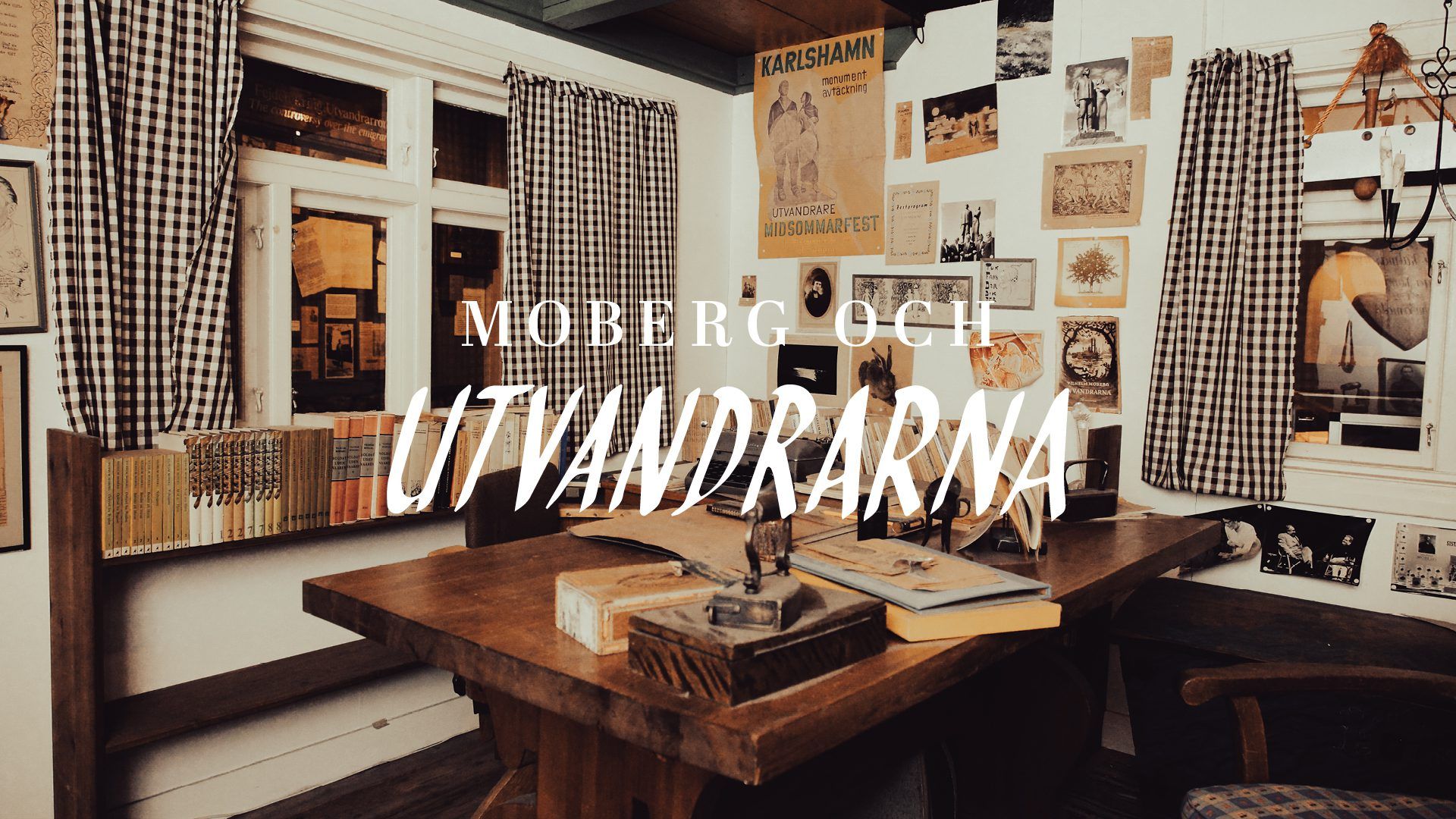Moberg and the Emigrants
- Permanent exhibition
- The House of Emigrants

As a young man, he saw relatives and friends emigrate to America, including several of his mother’s relatives. At the age of 16, he was close to leaving himself. He had bought a ticket but was persuaded by his parents to stay and study.
After World War II, Moberg began depicting emigration in writing, and in 1947, work started on the “emigrant series”. Extensive preparations were required, and he spent several years searching for information in libraries, archives, and through contacts in Sweden and America. Moberg spent 1948-49 in the United States. He visited the areas where many Swedish people settled, met Swedish relatives, collected materials, and wrote.
The Emigrant Suite
The book The Emigrants was published in 1949 and has since been translated into around thirty languages. Moberg wanted to portray the agricultural society during the height of emigration from Sweden. He focused on farmers from Småland who continued cultivating the land in the new country. The book series follows a dozen fates, each providing a perspective on the diversity, causes, and hopes that characterized the emigrant era.
Söderäng and the writers’ studio
In 1940, Vilhelm Moberg bought the farm Söderäng on Väddö just south of Grisslehamn. A large farm that not only contained two manor buildings, it also included a rental house, fields, meadows, and a forest.
About a hundred meters from the residential buildings, there was also a small village smithy. Moberg had this converted into a writers’ studio. For many years, the writing studio gave him the peace he needed to write. Here he also worked on his last work, My Swedish history.
In 1984, Moberg’s daughter Margareta Ahlberg donated the furniture from the writers’ studio to the Swedish Emigrant Institute in Växjö. The studio had been unused since Vilhelm Moberg’s death in 1973. Before the pieces of furniture were transported to Växjö, the interior was carefully photographed. Based on these photos, the writers’ studio has been reconstructed at the House of Emigrants in Växjö.